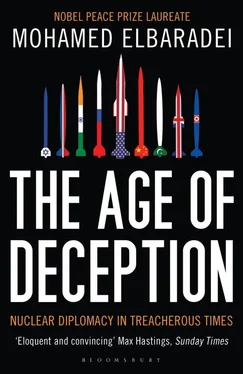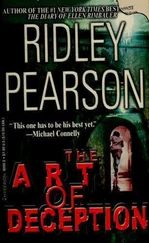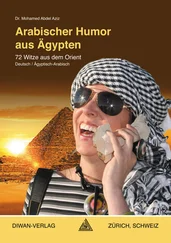Solana was next in line, calling for a reading on what I’d heard from Larijani. Washington, he told me, was not happy with the outcome of their talk. Although an affable person and an experienced diplomat, Solana was in an impossible situation as the point man on Iran for the P-5+1: with each country pressing its own opinion and with the Americans in particular breathing down his neck, Solana ended up trying to make something out of the lowest common denominator, which invariably meant an unclear mandate and little with which to negotiate.
I suggested that the proposed four principles be consolidated to two. One principle could cover Iran’s nuclear program, including its rights and obligations and the suspension issue. The second could be a commitment to negotiate on economic, political, and security issues, which could include a statement of good intentions vis-à-vis Iran on the part of the Americans, implying that they would not pursue regime change or the use of force. Our conversation concluded with my offer to help in any way and Solana’s assurance that he would come to see me in the next few days.
On September 19, Condoleezza Rice and her counterparts from the EU-3, China, and Russia met to discuss next steps. They agreed to give Iran until “early October” to reach agreement on how enrichment would be suspended as part of the negotiations. A staggered schedule of talks—starting without the United States, suspending enrichment in Iran in concert with halting Security Council action, then having the United States join—was put forward as a possibility. With some cynicism, the Washington Post reported that the Europeans were giving the Iranians their fourth deadline in four months. [10] Glenn Kessler, “Early October New Deadline for Iran,” Washington Post , September 21, 2006.
This was factually true, but the constant slippage was rooted in the unwillingness or inability of either side to compromise meaningfully.
At the IAEA General Conference in late September, I had a tense meeting with Gholam Aghazadeh, Iran’s vice president and head of atomic energy, the only original player still in office. He seemed offended, almost resentful, claiming that the Agency’s reports on Iran did not reflect his country’s four-year effort to cooperate. My answer, which was somewhat sharp, noted a record of inconsistent, unreliable cooperation on Iran’s part. I mentioned as well several long-standing technical questions that Iran had not yet answered.
Aghazadeh followed up by sending me a rather strange personal letter, which he said he was writing as a friend. As he saw it, the IAEA had no intention of ever closing the Iran file. The more Iran cooperated, the more questions they received from Agency inspectors. As a side note, he added that I was not well regarded by the Iranian leadership. He said he would not expect a reply. [11] It was hard to decipher his intentions. I suspected that Aghazadeh and his colleagues were feeling the heat, because our inspectors were pressing hard for the “full story” that would fill in gaps in the history of Iran’s nuclear program. The pressure to suspend enrichment may also have been on his mind; as one of the fathers of Iran’s enrichment program, Aghazadeh was not eager to see it disappear.
The frostiness of the letter did not bode well.
Indeed, in a phone conversation with Larijani, I heard discouragement. “These other parties,” he said, “do not understand the domestic situation in Iran.” He was obviously having just as difficult a time negotiating at home—trying to find a form of suspension acceptable to Tehran—as with Solana and his colleagues. The Iranians were ready to commit not to going beyond the one or two cascades already in operation, but it was highly unlikely they would agree to suspending completely.
Larijani told me extremism was taking hold. From his tone, I understood that he meant in Washington and Tehran.
The early October deadline for Iran to agree to suspend enrichment came and went. The failure of both sides to shift on the key sticking points meant that another Security Council resolution was the inevitable next step. I feared the cycle of retaliation that a new set of sanctions would surely trigger. Late October found me in Washington meeting with Condoleezza Rice and Bob Joseph. The first North Korean nuclear test had just occurred, which perhaps tempered the State Department’s inclinations regarding the Iranian impasse. I voiced my concern that a Security Council resolution should avoid provoking or humiliating Iran and should largely be directed toward inducing Tehran to resume the negotiations with the P-5+1. Rice seemed to agree.
I put forward a new possibility. “What about having the United States begin talking to Iran directly but confidentially on regional issues, such as security in Iraq?” By introducing dialogue on a less controversial topic, perhaps relations might be smoothed between the key players, making it easier to find a way forward on the nuclear issue. Larijani and his colleagues would be willing to have such discussions, but the United States would need to send someone at a higher level than Zalmay Khalilzad, the American ambassador in Iraq. To the Iranians, Khalilzad had insufficient clout.
Rice seemed somewhat open to starting such a dialogue. “You know,” I told her, “that Iran could make more of a mess of the Middle East.”
She frowned. “They are already meddling there.”
“They could do more,” I replied.
In a phone conversation with Solana, he concurred that any sanctions imposed on Iran should be “symbolic.” However, the draft resolution, when it came to me from the French mission in Vienna, was far too harsh. Actions such as travel bans on Iranian officials, freezing Iran’s foreign assets, and suspending or restricting the IAEA’s technical assistance would only be provocative and counterproductive. Similarly, making the IAEA’s “transparency visits” mandatory would just backfire. [12] A “transparency visit” was the term used when Iran agreed voluntarily to allow the IAEA to visit a site where the Agency had no clear jurisdiction.
The last thing we needed was to provoke Iran into accelerating its enrichment program or walking out of the NPT.
Sergei Kislyak, the Russian deputy minister of foreign affairs and a good friend for many years who had been deeply involved in the P-5+1 discussions, was of the same view. The draft resolution, he said, was “by no means acceptable” to Russia. “If the Europeans are going to push this resolution, it will change the game completely.” I got the impression that Russia might consider exercising its veto.
The resolution that finally passed on December 23, in a unanimous vote, had been considerably toned down. The sanctions, for the most part, only reinforced old measures: a ban on supplying Iran with nuclear-related technology and materials and a freeze of the assets of specific individuals and companies who had supported Iran’s enrichment program.
Iran’s response, too, was relatively mild. Javad Zarif, Iran’s ambassador to the United Nations, declared that “a nation is being punished for exercising its inalienable rights.” [13] Sarah Dilorenzo, “Iran Rejects U.N. Resolution and Accuses Security Council of Hypocrisy,” Associated Press, San Diego Tribune , December 23, 2006.
The Iranian Foreign Ministry issued a statement calling the resolution “an extralegal act outside the frame of [the Security Council’s] responsibilities and against the U.N. Charter.” More worrisome were signals from Tehran that there was no longer any reason to delay expanding the size of its enrichment program.
If we had not yet reached a point of no return, the stakes had certainly been raised.
Читать дальше












